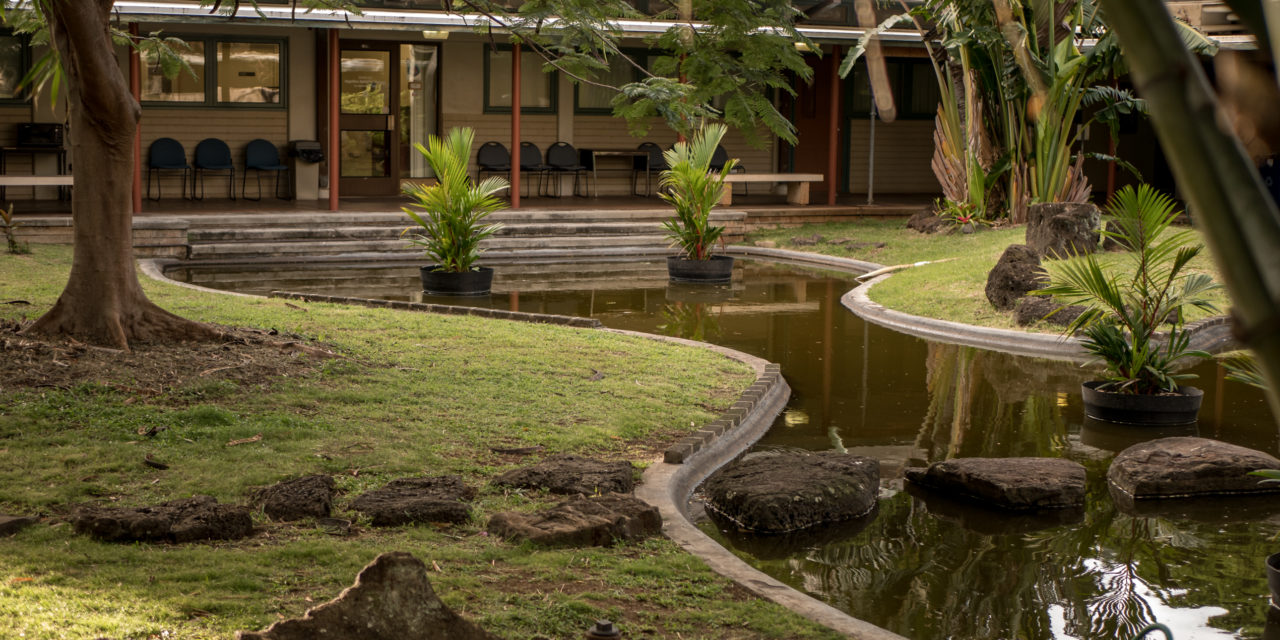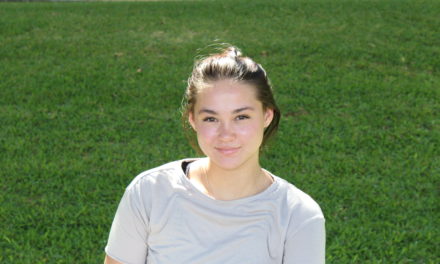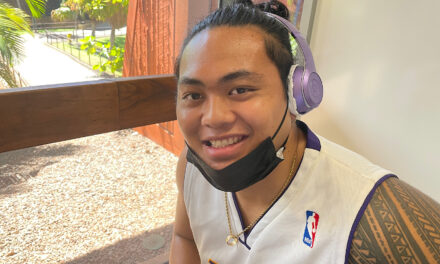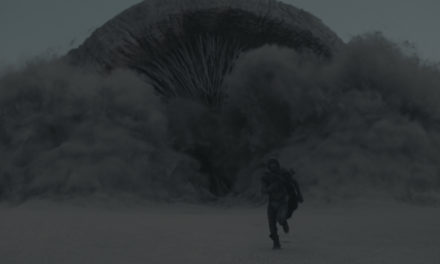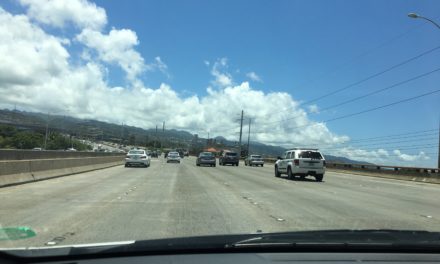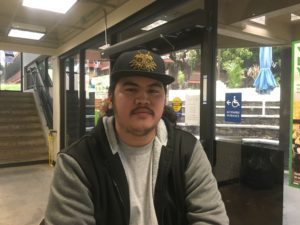By Mark Ladao | Staff Writer
Many students attending a community college in Hawai‘i end up transferring to the Mānoa campus at some point. As someone who has done a kind of transfer in the other direction and has been enrolled at Mānoa for the better part of the last eight years, I have come to learn about a few neat-o things about the campus that many people are unaware of. Here are five good ones.
1. There is a college radio station.
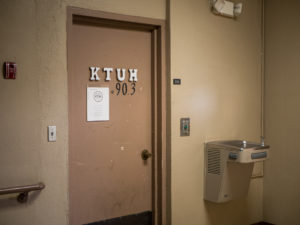
KTUH studio door at UH-Mānoa. (Photo by Mark Ladao)
I don’t mean for this to be a shameless plug for the university’s student radio station of which I am a DJ, but it exists. KTUH plays on the radio (90.1 FM everywhere on Oʻahu but 91.1 FM in Waialua) but also streams from the station’s website, various apps and even on TV. I didn’t find out about it until last semester, which speaks to how little it is advertised.
Supporters of KTUH will boast that it is one of the few 24-7-365 independent college radio stations left in the country. Whenever you tune in, you can be sure that there is a living, breathing person on the other end of that radio wave, curating the show you are listening to. Especially if you’re alone in the dead of night, it’s nice to know that there’s a non-robot person out there who still exists.
The music ranges from anything to anything but usually stays away from the most popular songs by the most popular artists, so you don’t have to listen very long before coming across a song or artist that you have never heard of before.
2. Five mythical ponds exist on campus.
I’m not even sure what the fifth one is or that the four I know about are part of the five, but the ones I know about are the pond under the stairs going down to the tennis courts, the duck pond at the Japanese Garden at the East-West Center, Ka Papa Loʻi o Kānewai near the Hawaiian Studies building and the duck pond in the middle of the UH Office of Research Services.
Aside from the pond under the stairs, which I believe is there just because of gravity and Hawaiʻi’s propensity for precipitation, the ponds are nice places to relax because they are tucked away in low-traffic areas. The most surprising of these is the UH Office of Research Services duck pond because it is so close to Campus Center and within feet of a heavily trafficked path.
The pond and surrounding garden are protected on all sides from view and a surprising amount of noise, and there are usually not too many people there. It’s nice if you’re looking for a place to hang out or take pictures of ducks.
If you know what the fifth pond is, LET ME KNOW.
3. There is an insect museum.
Okay so it’s not an actual museum but a collection of insect specimens in Gilmore Hall used for research. The University of Hawai‘i Insect Museum claims to have about a quarter of a million specimens, many of which are pinned against a white background in picture frame-like enclosures. The museum website says that there are only about two tours per semester, but those are dedicated tours for underage students, so as a college student you can probably negotiate your way into an informal viewing for you and a spicy date.
I did not realize how big some insects are (especially butterflies) were until seeing them spread out like the Vitruvian Man.
Also, did you know there are walkingsticks in Hawaiʻi?
4. An office on campus is dedicated for meditation.

The Pause Space at UH-Mānoa
The assumption about overlooked features of the campus is that they’ve been around for a while, but they just don’t get a lot of attention. But the Pause Space first opened up in fall of 2016, so it hasn’t had much time to get overlooked. Nevertheless, it is.
The space is an office in the Kuykendall Annex that is set up for students looking for a place to sit, relax and “pause” for however long they wish during their hectic, overpacked, capitalism-fueled schedules. In the office is a tiny zen garden, cushions to sit on, calming music and nature sounds and someone to provide guided meditation for any amount of time — from one minute to infinity minutes.
5. All the plants on campus are catalogued.
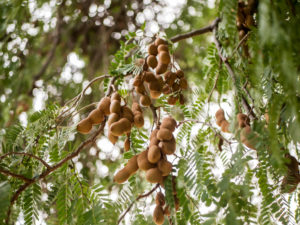
Tamarind hanging from the tree behind Dean Hall at UH-Mānoa
This one doesn’t need a lot of explaining, but the university has provided an online interactive map that shows all of the 750-plus species of plants on campus. Some of the plants are identified with physical signs, but the online map can tell you much more about them and pinpoint where they are located on campus.
Picking flowers from any of the plants requires permission from the university, and taking fruits from them is flat-out prohibited. It’s a shame, especially considering the Mānoa campus — which is an accredited arboretum — is home to a variety of fruit trees including breadfruit trees, mango trees, a jackfruit tree and a massive tamarind tree right behind Dean Hall.
However, fallen fruit is fair game, which begs the question: How can you get a fruit to fall off a tree without “picking” it?

